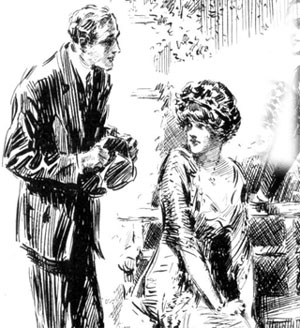
Politeness2 (Second-order politeness)
Politeness2 refers to the scientific conceptualization of politeness1 and as a theory of the universal principles governing human interaction. The construction of a theory of politeness2 may help us envision how politeness1 works in social interaction, what its function is in society, how polite behavior is distinguished from impolite behavior and what are the characteristics of (im)polite behavior. In addition, it may help establish the existence of linguistic universals in politeness and provide us with a better understanding of what (im)politeness is and is not during various communicative practices. Overall, politeness2 has been presented in various theoretical models that mainly examine politeness as a theoretical construct, as in the universal model of linguistic politeness proposed by Brown & Levinson (1987).
For a general overview of the history, perception, variation, sociopragmatics, and the scientific conceptualization of politeness see Bravo and Briz (2004), Eelin (2001), Lakoff and Ide (2005), Márquez Reiter and Placencia (2005), Mills (2003), Watts (2003), and Watts, Ide, and Ehlich (2005).
Some of the main definitions of politeness that have been provided in the politeness literature are described below:
Lakoff (1990): Politeness is “a system of interpersonal relations designed to facilitate interaction by minimizing the potential for conflict and confrontation inherent in all human interchange (1990: 34).
Leech (1983): Leech's model of politeness is founded on interpersonal rhetoric and views politeness as conflict avoidance. He introduced the Politeness Principle. The function of the Politeness principle is “to maintain the social equilibrium and the friendly relations which enable us to assume that our interlocutors are being cooperative in the first place” (p. 82).
Brown and Levinson (1978, 1987): Brown and Levinson initially proposed a universal model of linguistic politeness and claimed that politeness is realized linguistically by means of various strategies (positive and negative) across cultures. According to Brown and Levinson, face is invested, is something that can be lost, and must be constantly tended to in interaction.
Fraser and Nolen (1978), Fraser (1990): Fraser (1978) and Fraser and Nolen (1981) presented yet a different perspective which was elaborated on in Fraser (1990), namely, presenting the notion of politeness as a Conversational Contract. Fraser states:
Upon entering into a given conversation, each party brings an understanding of some initial set of rights and obligations that will determine, at least for the preliminary stages, what the participants can expect from the other(s). During the course of time, or because of a change in the context, there is always the possibility for a renegotiation of the conversational contract: the two parties may readjust just what rights and what obligations they hold towards each other. (1990: 232)
Spencer-Oatey (2000): Spencer-Oatey's framework of rapport management provides an alternative for analyzing sociocultural behavior in social interaction. This view excludes Brown and Levinson's original notion of negative face in which the individual is seen as an independent member of society; instead, group identity captures the notion of an individual who desires to be perceived as a member of the group. The notion of association rights refers to social interaction as appropriate behavior and rapport management that is co-constructed by both interlocutors according to the sociocultural expectations of the culture and the interlocutors' unmarked set of assumptions.
Scollon and Scollon (2001): Scollon and Scollon (2001) propose a model of social interaction to analyze the negotiation of face relationships in intercultural communication. The authors adopt the term involvement as a way of reminding us that the emphasis is on the common ground, highlighting the “person's right and need to be considered a normal, contributing, or supporting member of society” (2001: 46). Involvement is realized by such discourse strategies as paying attention to others, claiming in-group membership, using first names, or to show that the speaker is closely connected to the hearer. On the other hand, they use the term independence to emphasize the individuality of the participants. Independence is shown by such discourse strategies as making minimal assumptions, using formal names and titles, or by giving options to the interlocutor.
Watts ' politic behavior and relational work (2003, 2005): Politic behavior: “that behavior, linguistic and non-linguistic, which the participants construct as being appropriate to the ongoing social interaction. The construction may have been made prior to entering the interaction, but is always negotiable during the interaction, despite the expectations that participants might bring to it” (2003, p. 20).
In accordance with Locher and Watts (2005), Watts (2005) proposes a broader view of facework that goes beyond polite or appropriate behavior that is more suitable for explaining social interaction, namely, relational work.
Relational work refers to the interactional negotiation of face relationships. It encompasses various aspects of social interaction such as (in)direct, (im)polite, or (in)appropriate behavior (Locher and Watts 2005; Watts 2003, 2005)
